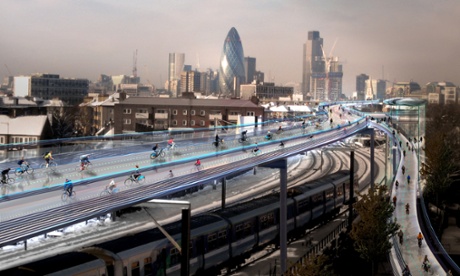On the new Sugar House S-Line, you can play the guitar, read palms and give Bible lessons while riding the trains, but you are not allowed to take photographs on the train or of the trains, according to an S-Line conductor. She said, “Watch out for the UTA police.”
The S-Line runs about 15-20 MPH, and while the concept is still a new one for residents, it hasn’t yet met ridership expectations. According to UTA Senior Media Relations Specialist Remi Barron, “The S-Line is currently averaging about 800 boardings per day, although some days that number has exceeded 1,000.”
The problem with the street car is that it doesn’t alleviate the traffic or parking issues because it falls short of the heart of Sugar House. Soon housing will be completed near the S-Line stop by Cowboy Partners and serve potential residents who will reside in the new housing
The Bike Path of the Future
However, the nice, wide bike path that runs beside the train line could offer many Sugar House residents a great way to easily bike to the TRAX station and save the $2.50 each way, or if you use FAREPAY it is only $1.00. It would be great if the city planners would put more into alternate transportation like bicycles. “Lord Norman Foster, renowned architect and founder of Foster + Partners, has proposed a massive network of elevated pathways for cyclists in London.

Dubbed ‘SkyCycle,’ the cycling routes would follow London’s vast suburban rail network for over 136 miles, allowing cyclists to traverse the UK’s capital without encountering cars or pedestrians.” The full article can be found here.
Keith Bartholomew, Associate Professor of Urban Planning, College of Architecture + Planning at the University of Utah finds “Norman Foster’s concept for a network of bicycle skyways is both visionary and familiar. As the article points out, the concept had a trial run in Los Angeles, California (of all places) more than a hundred years ago. Back when bicycles seemed like the vehicle of the people—much more than automobiles, what at the time were playthings for the affluent—having a network of exclusive rights of way, but of course, they were given over to cars. This history falls in line with the Good Roads movement of the late century, which was spearheaded by the League of American Wheelman (now the Bicycle Federation of America). The bicyclists developed the concept of paved streets, only to be thrown (sometimes literally) out of the way by the automobile. Foster’s idea also makes use of a very valuable resource in our modern cities—the space above railroad rights of way. It’s a brilliant idea. Let’s use gas tax revenues to pay for it!”





